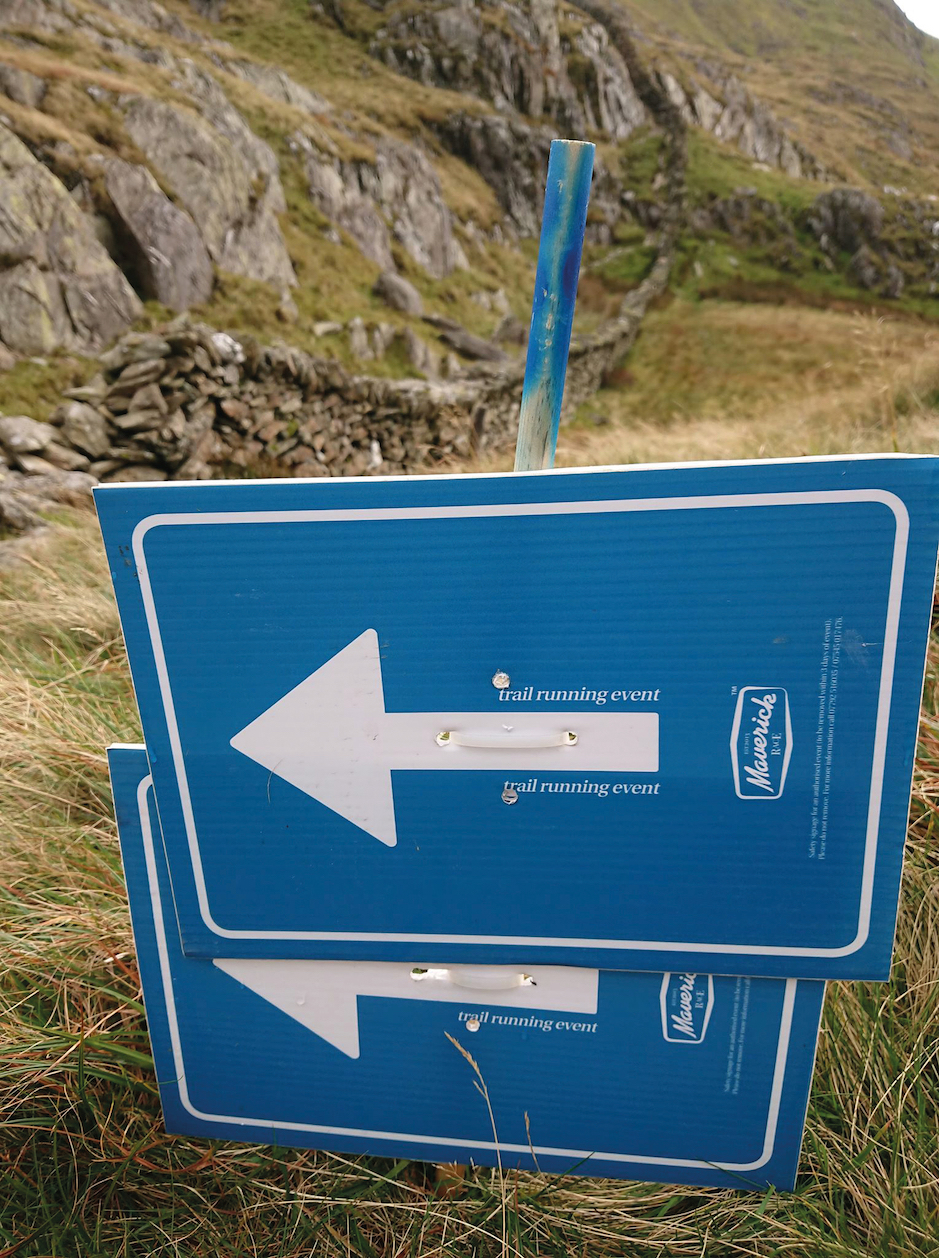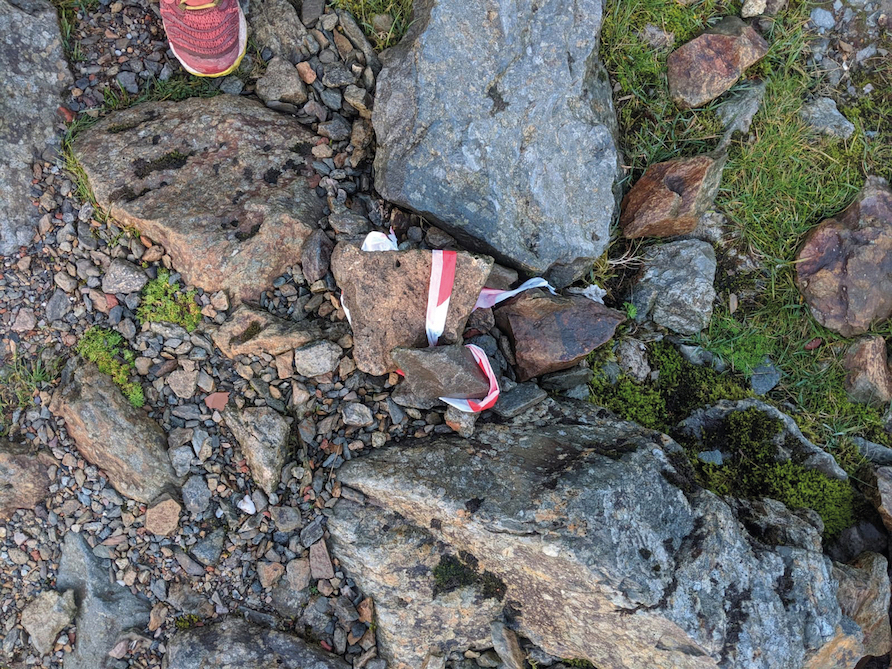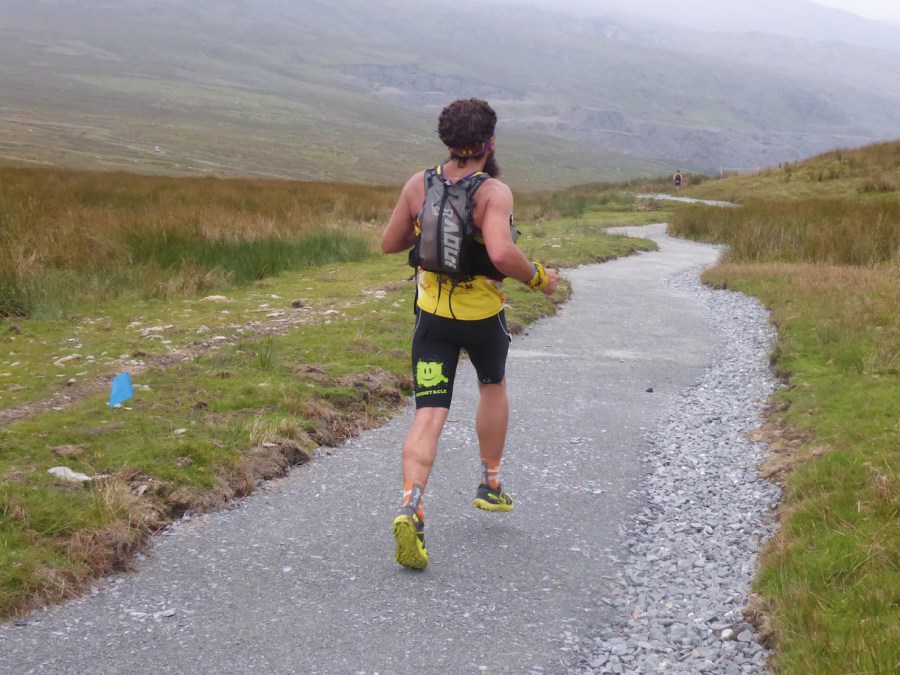Snowdonia plays host to dozens of organised mountain events every year; but not all of them seem to be cleaning up after themselves, leaving signs and debris in the landscape. Hanna Lindon looks into the issue causing upset in the area.
Litter pickers on Snowdon are used to bagging bananas, barbecues and everything in between – but it’s a different type of rubbish that currently has local walkers up in arms.
From glow sticks and fluorescent arrows, to plastic ribbons and yards of tape, the route markers left by organised mountain events are stirring up a storm on social media.
“The core of the problem is some events operating in the area and leaving trails of plastic when they leave,” explains local walking guide Jamie Rooke. “Yes, you do get participants dropping stuff on the floor, but the real issue is signage.”
Organised challenge events have proliferated across Snowdonia in recent years, driven by a massive boom in trail running and ultramarathons. Jamie estimates that running events take place almost every week during the summer months – and many, he claims, have no coherent route marking strategy.
The case for signage
Unlike traditional fell running competitions, the new rash of events tends to be targeted at people who have limited navigational experience.
“The trail running scene is absolutely booming,” explains Kate Worthington, a Snowdonia-based Mountain Leader who has worked as a signage manager for several large events companies. “Runners want to explore beautiful, challenging environments yet don’t always have a strong set of mountain skills, so I totally understand that organisers use route signage.”

Signage left behind following a trail running event in Snowdonia – by Jamie Rooke
Without signs, the safety of participants could be compromised. That’s the case made by events companies, some of whom claim that interference by critics is compounding the problem. The Great Outdoors contacted several organisers of Snowdonian events for comment, but only the Trail Events Co responded.
“We are constantly in discussion with the local authorities to try and find a way forward that will ensure runners are kept safe during the race and on the correct route,” said a representative.
“Signage left is infuriating for locals and also the events companies who constantly get criticised and blamed for non-removal of signs which are not theirs. Companies also have to deal with certain bands of locals who purposely remove, change and replace signs prior to, during and post races which adds to local fury.”
Leave no trace
While few condone the removal of route markers, it’s easy to see what has local mountain folk riled. Jamie cites ribbons tied to grass, plastic signs left on the mountain, and markers installed in unnecessary places where there are no possible alternative routes. Mountain leader Keith Hulse, a volunteer warden for the Snowdonia National Park who has assisted on the Snowdon Trail Event and Rat Race’s Man vs Mountain, also sees regular evidence of mismanaged route marking.
“This year, to my recollection, we have had problems with red markers and blue markers of varying types – including ribbons, arrows, boards and glow sticks,” he says. “Where we can reduce any physical impact on the mountain then that’s what we should do, which does include not putting out any signage unless it is vital – and then it needs to be removed straight away afterwards. If we can adhere to the above I have no issue with responsible, sensitive route marking.”

Ribbon left behind – captured by Jamie Rooke
The buck stops where?
Part of the problem lies in how to police events signage. SNPA Access Officer Peter Rutherford points out that the national park has produced event guidelines, which include the timely removal of signage, and advice against the use of tape or spray. “From next year we will be asking that organisers use small, clearly identifiable signs with some form of organisational ID or contact on them,” he adds.
When companies fail to follow the rules, however, there is little the national park can do.
“It depends on the relationship between the event organiser and the landowner,” says Kate. “But even if the landowner objects, the organiser could just say that their participants will follow the legal rights of way.”
One possibility advocated by Elton Angle-Smith, a Snowdonian outdoor instructor and fell runner, is sending feedback to the events companies.
“I can’t abide any litter left on the hills, but if it can be identified as to which organiser left it – likely unintentionally – a polite call or email to them will go some way to ensuring they don’t do it in future,” he says.
Jamie Rooke also advises walkers to report inappropriate signage. “We’re not encouraging people to interfere with any event signage they find, but if they believe it has been placed irresponsibly or simply not collected after an event, to take photographs and record accurate grid references and dates and send it to the SNPA Access Officer,” he advises.
“Event signage pollution is one of many pressures currently facing Snowdonia National Park, but is one that should be easily remedied by effective event management, a stringent approach to not using excessive signage, and always removing them afterwards.”







